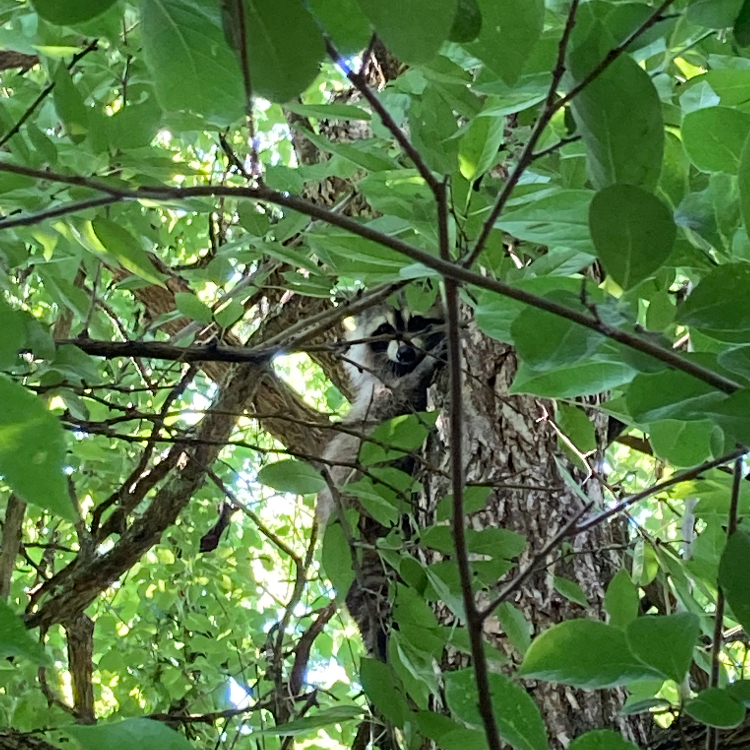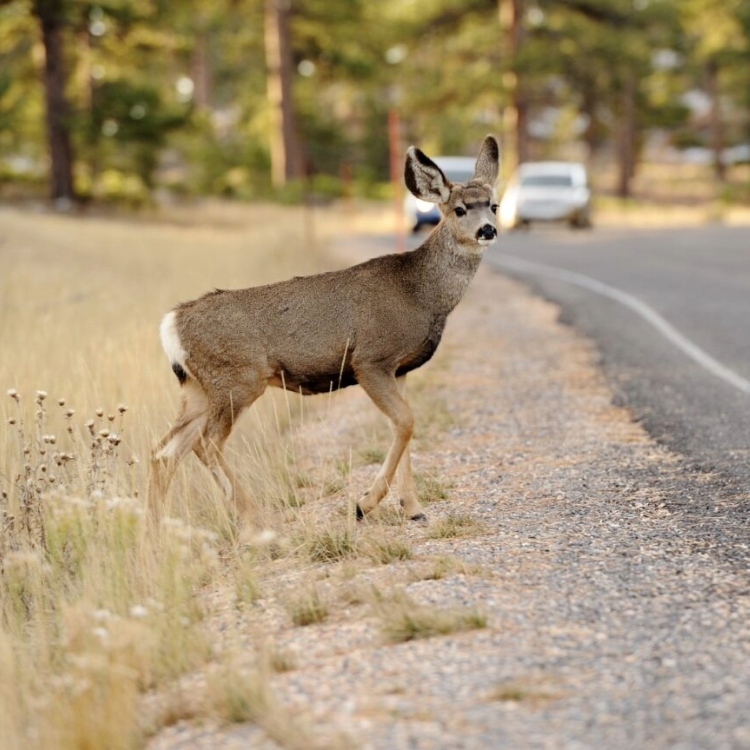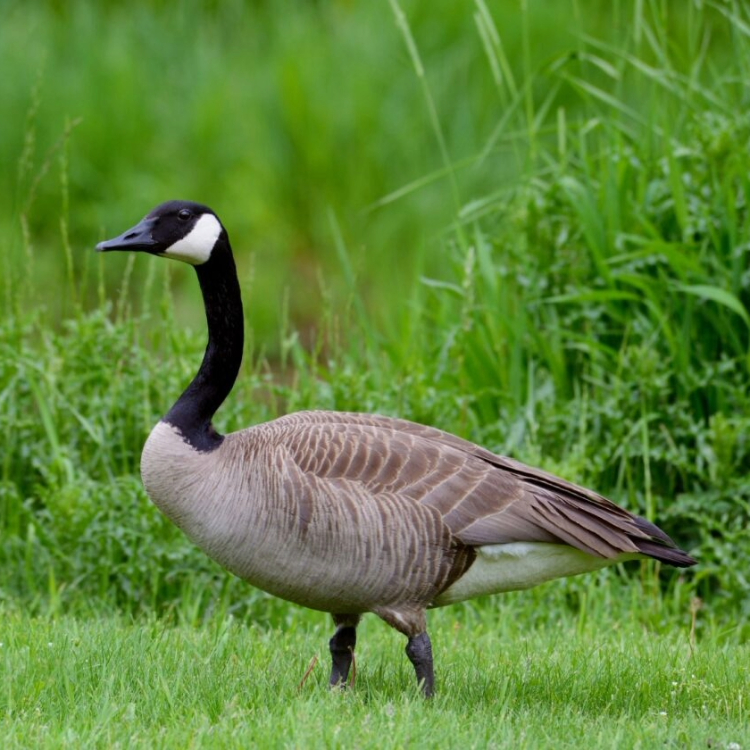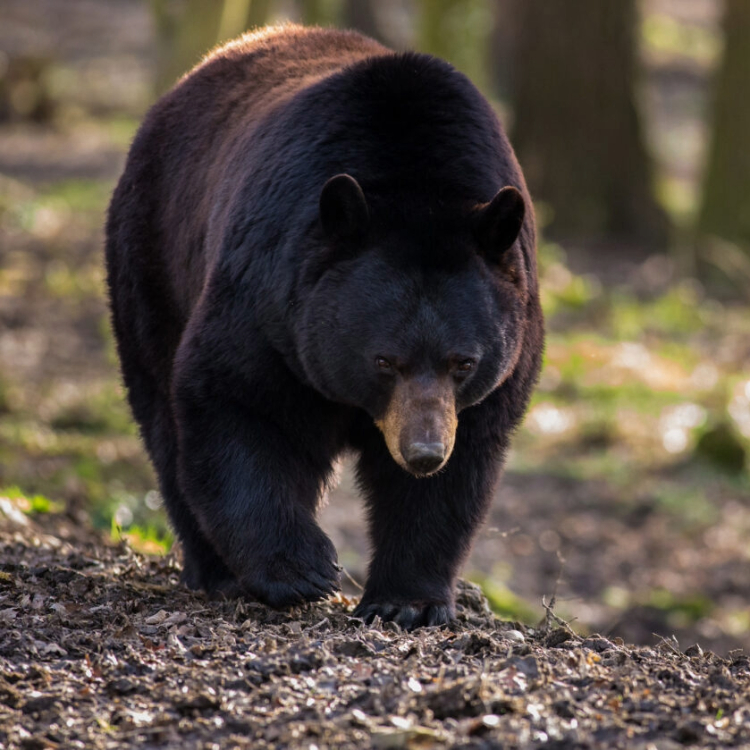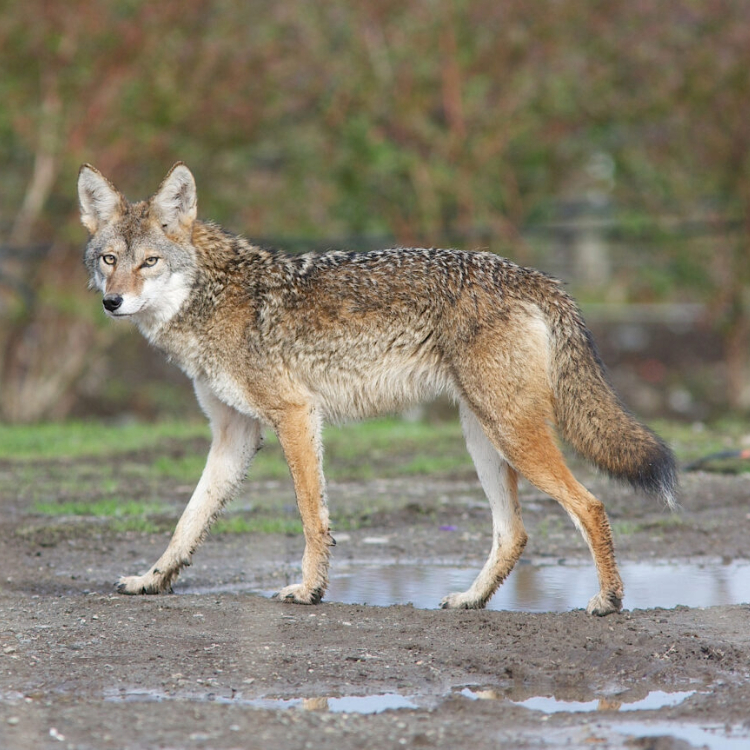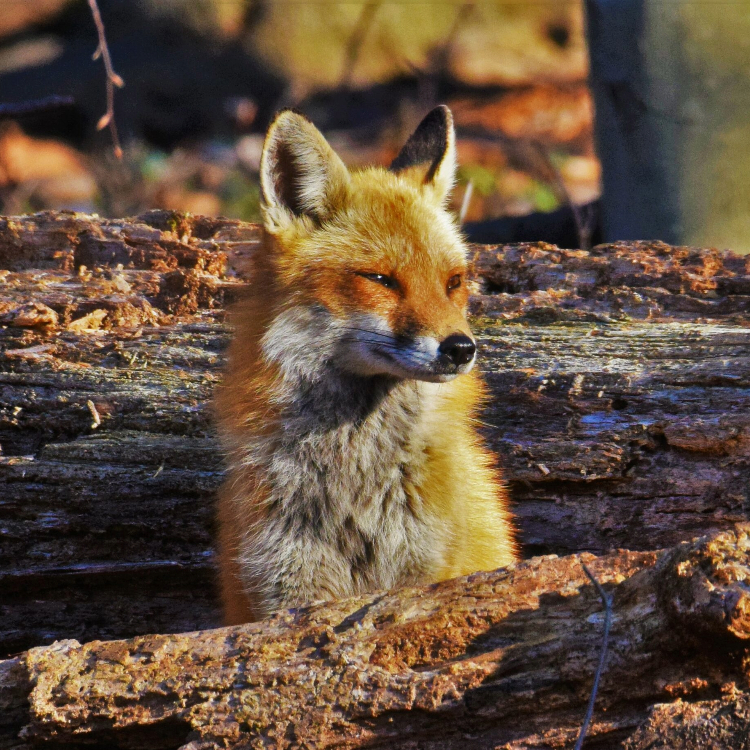Nuisance Species
“Nuisance” wildlife species are different from “invasive” species because they are native to the local environment. However, they can still cause problems for people and property. Some ways in which nuisance wildlife cause harm is through:
- predation,
- grazing,
- competition,
- parasitism,
- disease,
- hybridization,
- or habitat alteration.
White-tailed deer, for example, can damage crops and landscaping, alter forest structure and are a serious road hazard. Canada geese can degrade water quality and leave a mess on lawns and walkways. Others like racoons (Procyon lotor) can get into trash, raid bird feeders or take up residence in attics or chimneys.
Here are some examples of common nuisance animals:
White-tailed Deer (Odocoileus virginianus)
White-tailed deer are a major component of New Jersey’s landscape. They are native to North, Central, and parts of South America and are commonly found throughout all the State’s natural, rural, and suburban areas. European settlement and related activities have contributed to both their increase and decline. Land use change (conversion from forests to agriculture or housing developments) has favored deer expansion by providing an abundance of food and cover. Because they are generalist foragers (not picky about what to eat), deer are successful at occupying many types of niches. Due to changes in hunting regulations, interests, and other challenges, the deer population has grown substantially.
Deer are considered “ecosystem engineers”. This means that they tend to influence or alter forest community structure through selective grazing. Consequently, this foraging behavior can also introduce and spread invasive plants, either by ingesting, transporting, and disseminating seeds on their hooves or in their feces. When deer target native species, they open patches in forests that can allow for invasive plants to become established.
The promising news is there are native plant species that can serve as “deer deterrents” (NPSNJ | Deer Resistant Native Plants). These plants are less palatable to deer, thus growing them in your yard can help protect your landscaping from the local herd. Growing native plants also enhances your property’s ecological value while providing desired aesthetics. Along with deterring deer, native plants support a healthy ecosystem and provide beneficial habitat for pollinators and other wildlife.
Resources:
Canada Goose (Branta canadensis)
The Canada goose is a migratory bird species that is native to North America and is comprised of several subspecies. Most Canada geese migrate to and from Eastern Canada, but some remain as year-round residents. Since the state has a wide variety and high availability of preferred habitat (large open lawns, abundant water features, and mild winters), including lack of natural predators, Canada geese are choosing to stay. In New Jersey, Atlantic Canada geese (Branta c. canadensis) are the most common subspecies, frequently found in urban and suburban areas.
Resident Canada geese can be problematic, especially when nesting or when occurring in great number. Canada geese can be aggressive, ruin lawns through excessive foraging, leave droppings all over sidewalks and other areas, and impair water quality when fecal material enters waterways.
Resources:
Black Bear (Ursus americanus)
Black bears are the largest land mammal in New Jersey. They have been confirmed in all the State’s 21 counties and are an important part of the state’s natural heritage. Since the 1980s, New Jersey’s black bear population has been increasing and expanding its range. Black bears are opportunistic feeders and are attracted to human food and food waste. Although wary of humans, black bears can become aggressive when threatened. Black bears can become a neighborhood nuisance if allowed access to trash or other food sources (e.g., bird and pet feeders).
Resources:
Eastern Coyote (Canis latrans)
The eastern coyote is a relative newcomer to New Jersey, first reported in around the 1940s. Scientists believe that this phenomenon is a result of range expansion – in this case, the absence of one predator (I.e., wolves) allows another to now move into a new niche. Today, coyotes can be found in all of NJ’s 21 counties.
Coyotes are an extremely adaptable species and can survive on most food types. Their typical diet consists of small mammals, insects, carrion, and wild fruits. However, coyotes do sometimes prey on poultry and livestock, and even small pets. Unattended trash, pet food left outside, or even compost can attract this opportunistic species.
Resources:
Red Fox (Vulpes vulpes)
It is debated as to whether the red fox is native to New Jersey, however it now quite common and found throughout the state and most of North America. Foxes are well adapted to humans and to our modified landscape. They are clever opportunists and can survive on a variety of food types. Foxes prey on small mammals and birds, though they will also eat fruits and insects. They can be problematic since they are also attracted to garbage, pet food, and other human derived foods. Pets and small livestock can be targeted if left unattended.
Resources:
Beaver (Castor canadensis)
The beaver is native to North America and is also the continent’s largest rodent. Beavers can weigh more than 100 pounds, derived from a diet comprised of both woody and non-woody vegetation. Beavers are ecosystem engineers and intentionally modify their habitats to meet their needs.
Specifically, beavers build dams to create ponds that provide food and safety, critical to their survival and well-being. The process unfortunately requires a lot of material, resulting in a mass of fallen trees and woody debris. Besides impacts to the riparian community, dam building alters the morphology and flow of the targeted waterway. Ultimately, these activities can flood crop fields and roadways, fill the ponded area with sediment, affect the fish community, and/or lead to conflicts with property owners. These modified areas may also become susceptible to invasive plant species invasion.
Resources:
Wild Turkey (Meleagris gallopavo)
The wild turkey is a large, upland gamebird native to North America. Once hunted nearly to extinction, turkeys were reintroduced to the state in the 1970’s. Since then, they have become a success story and have become a common sight in fields and neighborhoods. Although capable of flight, turkeys mostly travel by running or walking.
Turkeys are habitat generalists, which means that they tend to utilize a wide range of landscapes, including fields, woodlands, and suburban lawns. At night, turkeys will roost up in trees or even on buildings. Their diet is also varied, and consists of plants, roots, seeds, insects, or other small easy meals. Conflict occurs when turkeys damage crops, get into bird feeders, or our gardens. On occasion, turkeys can act aggressively toward people, and may challenge or chase someone if feeling threatened or territorial.
Resources:
